Search Results for 'Ballina'
91 results found.
'Being on the edge of Europe gives us a different perspective on the world'
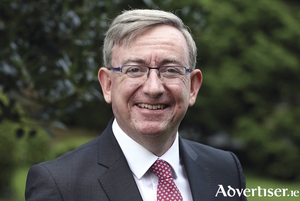
NUI Galway starts 2018 with a new president at the helm, Prof Ciarán Ó hÓgartaigh, who comes to the university after a seven-year stint as principal and dean of UCD College of Business, leading its schools in Dublin and its overseas programmes.
Oliver With a Twist in Ballina
The award-winning Ballina-based Heroes for Hospice group is back in the spotlight after a long break following the success of its sell-out Beyond the Barricade musical production. The group, led by Lavinia Gilmartin, announced this week that it will stage another sensational musical production in aid of Mayo Roscommon Hospice Foundation next month.
Get a step ahead with Ballina's newest podiatry clinic

Step Ahead Footcare is a podiatry clinic, which will be opening its doors for business on Monday, October 16, in Garden Court, Garden Street, Ballina. While the main clinic will be based in Ballina, clinics will also be provided bimonthly in Ballyhaunis, Ballymote, Killala, Kiltimagh, and Tubbercurry.
Centenary of St Patrick's, Newport church construction celebrated
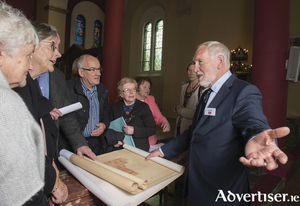
John Sisk and Son Ltd on Friday, celebrated 100 years since the building of St. Patrick’s Church, Newport. The occasion was marked with a Mass celebrated by Fr. Tod Nolan PP at St. Patrick’s Church, followed by a reception at the Castlecourt Hotel in Westport.
Food Fleadh Ballina returns for fourth year and promises to be bigger and better
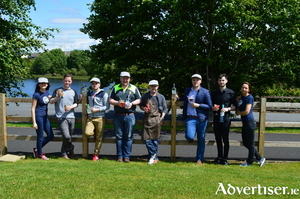
Mayo’s most anticipated food festival finishes off a busy summer calendar of festivals and events in the county with a weekend menu of wild Atlantic seafood foraging, outdoor cooking demos, children's cooking classes, craft beer brewing, and Ballina’s own whiskey and poitin distilling as part of this year’s Food Fleadh Ballina 2017 celebrations.
North Mayo’s flax growing industry
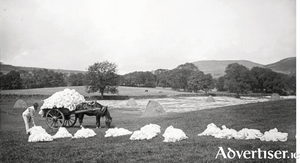
The success of the early linen industry in Mayo is often overlooked, especially in terms of the numbers it brought into regular employment. The growing of flax in Ireland for the production of linen was encouraged by English monarchs from the 17th century in order to reduce the Irish woollen industry which was competing with its English counterpart. The Crown's chief governors in Ireland supplied flax seed, sold looms at cost to farmers and employed linen experts from the continent to instruct the Irish in how to get the most from their flax harvest. The industry exploded as a result, and by the end of the 1700s, linen accounted for almost half of Ireland's total exports. Mayo benefited greatly from the linen boom. The Binghams of Castlebar and Brownes of Westport developed massive linen markets in both towns. Castlebar catered for all linen trading from the south of the county. By 1834, 30,000 people were employed in the linen industry in Mayo. That equated to over eight per cent of the county's population which had increased in tandem with the growth of the linen trade.
A stranger among the poor
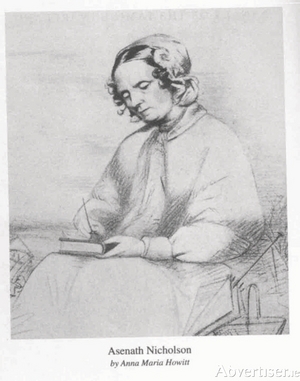
During her first visit to Ireland while walking the road from Oranmore to Loughrea, Aesnath Nicholson, a lone witness to the growing desperation of the poor as successive years of the Great Famine took its frightening toll, stopped to rest her blistered feet. She leant against a wall and thought about the advice her friends had given her in America. They told her the trip was reckless and she would damage her health. Yet even at that moment she asked herself: Would she rather be back in her parlour in New York?
The practical patriotism of the ICA
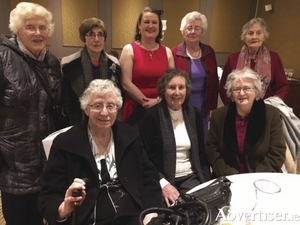
I was fortunate to have been invited this week to give a talk on the history of Castlebar to the local branch of the Irish Countrywomen's Association (ICA). The evening went well, and my thanks to Maura McGuinness, Patricia Larkin, and all the membership for their hospitality. It was in preparing for that talk to an all-female audience that I was reminded of how devoid our local history is of women and women's groups, when compared to their male counterparts. In the 400 years I covered, only five women featured publicly and briefly. We know the reason for this was because a male dominated society had structured a degraded role for women which was almost impossible to break from. For those women who wanted to express themselves, the ICA was and remains an important outlet since its inception in 1910.
Dublin in twelve hours, and that is a promise
Through the years of kingdom, empire, dominion, republic and continental union, County Mayo has retained the rarely advantageous honour of being among the most westerly outposts of each political entity. The county's distance from the heart of government and its demanding terrain seriously hampered any mode of movement, in and out of Mayo. At the passing of the Acts of Union in 1800, the Crown accepted that responding to sporadic violent opposition to the legislation would be difficult considering a regiment on foot would take six days to travel from Dublin to the west. Correspondence between the British authorities in Dublin and their surrogates in Mayo would therefore be all the more urgent. However, at this time, it took the swift mail coach, running through the night, more than 30 hours to reach the county capital. Logistical challenges existed too for the movement of produce and for travelling men of business. Any coach journey covering 60 miles a day was considered efficient. To reach even Mayo's eastern border by coach from Dublin would have taken two days with good conditions. Land transport, at the turn of the 19th century, was undependable and slow. As a result, long distance travel on the part of most people was simply not undertaken due the many obstacles it raised.
1916 belongs to every Mayo town and village
The nationalist Irish Volunteers were established in November 1913 as a response to the formation of the unionist Ulster Volunteers in 1912. Members of the Provisional Committee of the Irish Volunteers selected areas around the country which they would visit with the aim of setting up Volunteer companies. Committee member Colonel Maurice Moore of Moorehall in Carnacon outside Castlebar chose to return to his home county to organise and mentor the men of Mayo. Moore had military experience since the 1870s with the Connaught Rangers and was well respected by both traditions.

